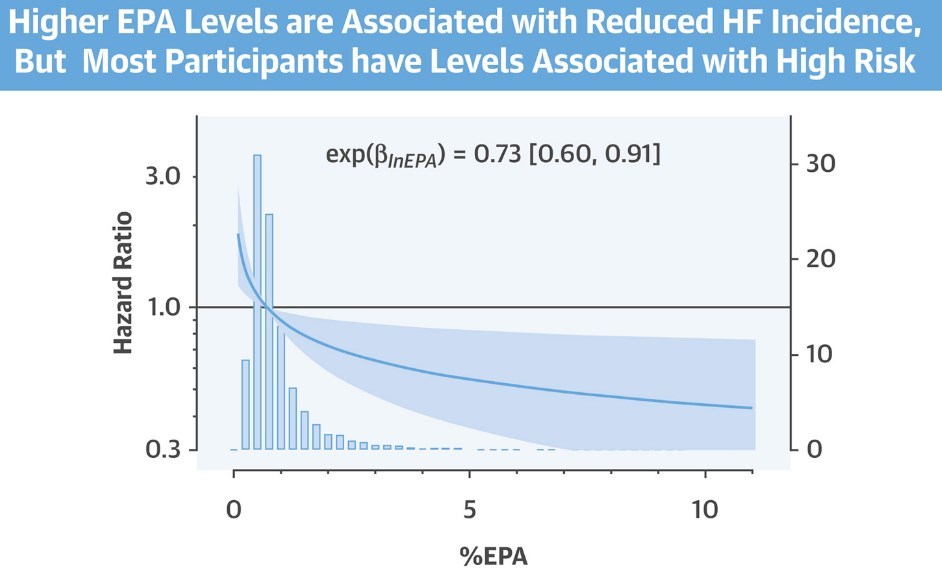Few people have enough EPA (an Omega-3) to reduce heart failures
Predicting Risk for Incident Heart Failure With Omega-3 Fatty Acids: From MESA
JACC: Heart Failure, https://doi.org/10.1016/j.jchf.2019.03.008
📄 Download the PDF from Sci-Hub via VitaminDWiki

% of population = column on the right side
Objectives
The aim of this study was to determine if plasma eicosapentaenoic acid (EPA) abundance (%EPA) is associated with reduced hazard for primary heart failure (HF) events in the MESA (Multi-Ethnic Study of Atherosclerosis) trial.
Background
Clinical trials suggest that omega-3 polyunsaturated fatty acids (ω3 PUFAs) prevent sudden death in coronary heart disease and HF, but this is controversial. In mice, the authors demonstrated that the ω3 PUFA EPA prevents contractile dysfunction and fibrosis in an HF model, but whether this extends to humans is unclear.
Methods
In the MESA cohort, the authors tested if plasma phospholipid EPA predicts primary HF incidence, including HF with reduced ejection fraction (EF) (EF <45%) and HF with preserved EF (EF ≥45%) using Cox proportional hazards modeling.
Results
A total of 6,562 participants 45 to 84 years of age had EPA measured at baseline (1,794 black, 794 Chinese, 1,442 Hispanic, and 2,532 white; 52% women). Over a median follow-up period of 13.0 years, 292 HF events occurred: 128 HF with reduced EF, 110 HF with preserved EF, and 54 with unknown EF status. %EPA in HF-free participants was 0.76% (0.75% to 0.77%) but was lower in participants with HF at 0.69% (0.64% to 0.74%) (p = 0.005). Log %EPA was associated with lower HF incidence (hazard ratio: 0.73 [95% confidence interval: 0.60 to 0.91] per log-unit difference in %EPA; p = 0.001). Adjusting for age, sex, race, body mass index, smoking, diabetes mellitus, blood pressure, lipids and lipid-lowering drugs, albuminuria, and the lead fatty acid for each cluster did not change this relationship. Sensitivity analyses showed no dependence on HF type.
Conclusions
Higher plasma EPA was significantly associated with reduced risk for HF, with both reduced and preserved EF. (Multi-Ethnic Study of Atherosclerosis [MESA]; NCT00005487)
